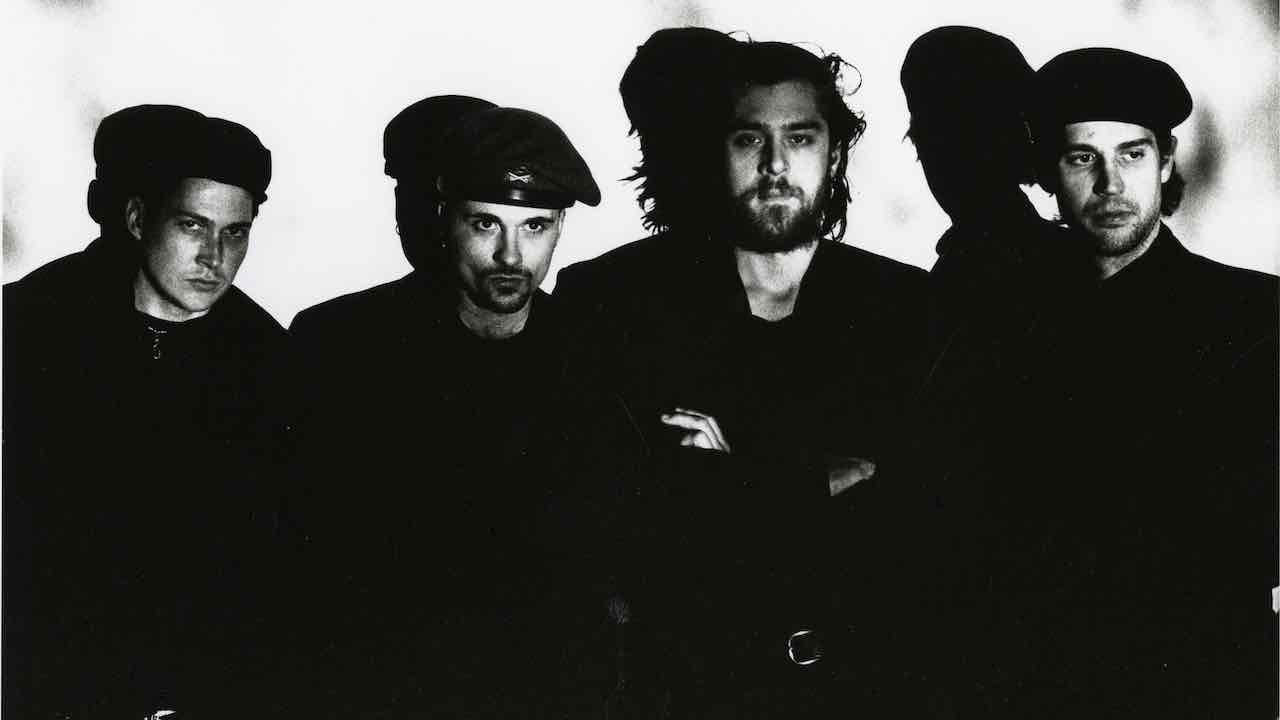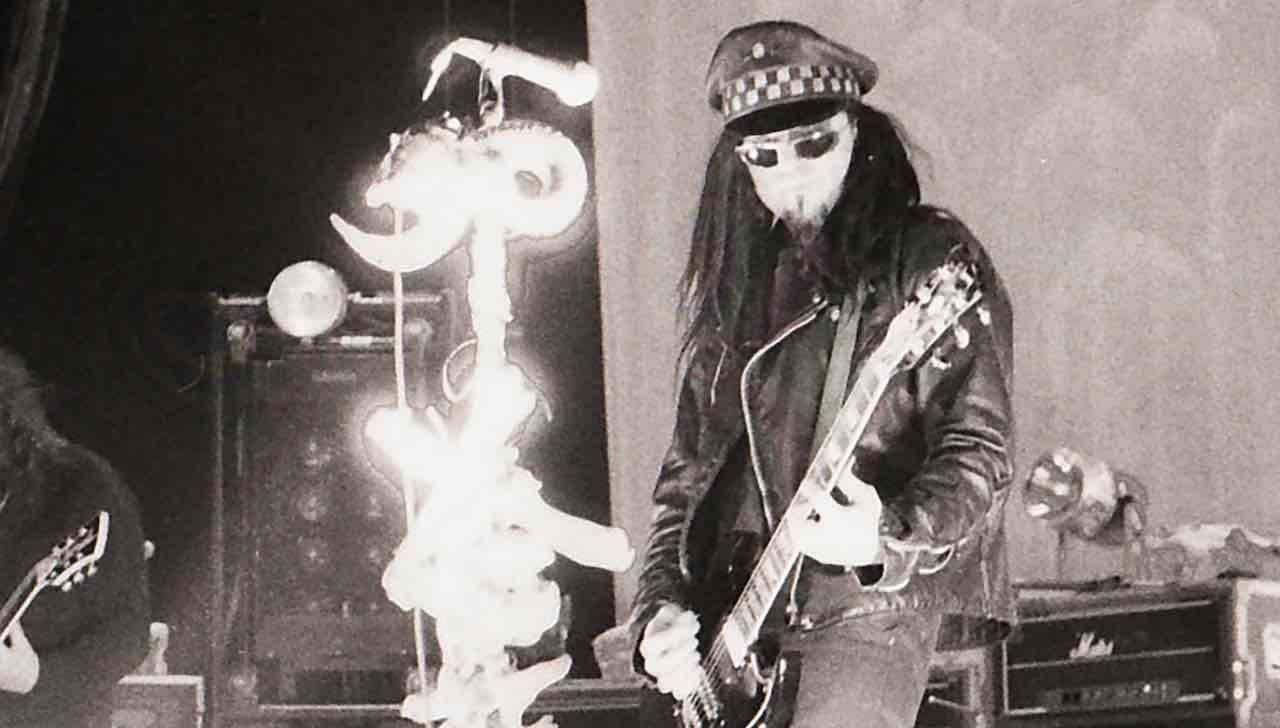Rise of the machines: how industrial music took over the world
From Throbbing Gristle to Ministry, this is the story of industrial’s unlikely rise

In 1988, industrial was at its peak. Not just in terms of the number of landmark albums that were released, but in the sheer breadth of vision that was encompassed under its banner. Like Florida’s emerging death metal scene, the bands active in the late 80s weren’t working from a template, but were determined to open up new facets, each with their own inventive, fiercely articulate yet complementary worldview. Whether in its US or European incarnations, industrial was capturing the zeitgeist in a way that no other music genre could, navigating psychological, social and political terrain where the tail-end of Cold War austerity and rictus-inducing paranoia met the opportunities, and the humanity-conditioning demands, of a new, technological age.
1987 had seen groundbreaking releases from Laibach, The Young Gods, Nitzer Ebb, Einstürzende Neubauten, Skinny Puppy and more, and the following year upped the ante even further, with a clutch of albums that would forever alter the industrial scene and the underground world beyond. Godflesh’s self-titled, debut mini-album channelled dub-laden vocals, pitiless drum machine grind and the urban claustrophobia of their native Birmingham, churning a soup of musical DNA that’s been supped from ever since. Vancouver’s Skinny Puppy, meanwhile, refined their own strain of abject, all-permeating horror on their VIVIsectVI album, rewriting the rules of industrial to an unfathomable yet gripping code. Envisioning humanity as reduced to a discipline of iron-willed, self-sufficient survivalism, Front 242’s Front By Front proved so consummate that no band since, including 242 themselves, has ever come close to replicating its immaculate, irresistible potency. Every track, including the unforgettable, dancefloor-filling lead single, Headhunter, felt like it was being mechanically imprinted into your DNA.

If industrial in the late 80s was a broad church, at its most potent as an idea to be constantly reinterpreted rather than blindly adhered to, it’s because the movement was still in dialogue with its fearlessly avant-garde roots: specifically, the band who gave rise to the term, Kingston Upon Hull’s Throbbing Gristle.
Formed in 1975, fronted by arch provocateur Genesis P-Orridge, and with very little in the way of a beat to speak of, the four-piece were as much a way of life as a musical endeavour, with their dread-inducing, occult-tinged sound collages released on their own label, Industrial Records. Albums such as their 1977 debut, The Second Annual Report, were determined to uncover, confront and understand the darkest recesses of the human experience, from the Holocaust, to severe physical trauma, to the sex industry and social control, all using various experimental techniques – not least beat author William Burroughs’ ‘cut-up’ method, where texts were rearranged to reveal hidden meanings emerging within.
For guitarist and co-vocalist Cosey Fanni Tutti, the use of the term ‘industrial’ had a different meaning to the one it’s since come to represent.
“It meant being industrious and very disciplined and dedicated to what we were doing,” she explains. “But parallel to that we were also having fun. That’s the element that people tend to miss. There was mischief involved, and there was irony and pastiche of different things as well, and it was all part of the palette of presenting life; this might be serious but you also have to consider, which is just as relevant now, control systems and manipulation by people in power, subtly, without you quite noticing until it’s too late. So we had to take them apart in order to examine them, by any means possible.”
For Cosey, industrial was an open-ended approach, based on a need to articulate your environment in the most honest and revealing way possible.
Sign up below to get the latest from Metal Hammer, plus exclusive special offers, direct to your inbox!
“We tended to follow our moods rather than stick with a sound,” she says, “and obviously dire situations socially, politically and culturally that were going on influenced our sound more than us just putting in an engine noise or a drill or something, which isn’t how I define industrial music. It has become that – hard-edged, and a more mechanical sound if you like – but the mechanical sounds we used were inspired by our situation, our environment, as much as they also expressed how we felt, because it was very raw and powerful to have that machine coming through as a musical sound rather just than a sound effect bolted on.”
It’s telling that Throbbing Gristle, along with Sheffield-based, proto-industrial contemporaries Cabaret Voltaire and ClockDVA, were all from northern cities, fashioning their immediate environment into revelatory new forms, but ones that also resonated with actual lived experience.
“Growing up in Hull was a big influence,” says Cosey. “I worked in factories there, so you’re always aware of music in the background with the radio on, and at the same time you’ve got this fantastic rhythm of these machines that you’re using, and that must have influenced us for sure. I think in Sheffield, the steel factories would’ve been an influence too. But alongside that comes an attitude of discipline. In the factory I worked in, if you weren’t disciplined in how you used the machines, you could lose your hand. It was as simple as that. There is nothing academic about it, it’s very practical, and I think that’s the thing with a lot of the bands at that time, is that we were very practical in how we did things. It wasn’t elitist. You didn’t have to have a degree to do this sort of music, you just had to have the urge to create.”

The one album from industrial’s class of ’88 that most paralleled Throbbing Gristle in terms of innovation, Burroughs-inspired mind-warping mayhem, horrific imagery (the cover featured a distorted picture of a burnt corpse taken from a Holocaust documentary) and individualistic enterprise was Ministry’s pivotal album, The Land Of Rape And Honey. That it was released on a major label, Sire, and that now-legendary frontman Al Jourgensen had been signed as a somewhat more commercially minded synthpop artist, only made the follow-up to 1986’s Twitch a yet more bewildering leap into the breach.
“The Land Of Rape And Honey,” says Al, “was a landmark album in that it was where we stopped taking direction from record companies and A&R people and established voices and just said, ‘You know what? We played it by your rules for a while now, and it’s gotten us nowhere except acid indigestion.’”
Fuel-injected, belligerent, utilising tape loops, drum machines and serrated guitar riffs, …Rape And Honey was a sonic maze of misdirection. It singularly laid the groundwork for the industrial metal scene that was to come, even if that ground was thrillingly unstable.
“It was a very difficult album to make,” Al recalls, “but it was probably also the most fulfilling album that I’ve ever been a part of, in the sense that the recording technique completely went off the rails. We basically got pretty high and bulk recorded a lot of different ideas for months at a time with no agenda or an end in sight. I spent four months with just a quarter-inch tape machine and edited this stuff together. I’d take things that were in the same BPM, and splice it all together. It was very similar to my hero William Burroughs’ cut-up method. We didn’t know if it was going to work, we didn’t know what the fuck we were doing, but we decided to just go for it anyways because it felt good.”
Al became friends with Genesis P-Orridge, and although Throbbing Gristle made an impact on him in his pre-Ministry days, just like them, he had to find his own path to his industrial epicentre.
“I sold out before I started,” he laughs, “whereas the Gristle people started out pure. We were on the same wavelength, we wanted the same thing, we just took different paths to get there.”
“There’s a lot of different ways to interpret industrial,” he continues. “My biggest influence was The Modern Dance by [Cleveland art punks] Pere Ubu. They were still using crowd noises and samples and demented breaks and breakdowns that were complete non-sequiturs in the song. That’s what really floated my boat. I’ve never heard them called an industrial band, but to me, that was as industrial as it got.”
Before the release of …Rape And Honey, Al had already joined forces
with Front 242’s Richard 23 to form Revolting Cocks, and would help produce Skinny Puppy’s fifth album, Rabies, in 1989. Meanwhile, labels such as his hometown Chicago’s Wax Trax! Records were providing creative hubs for the industrial scene, the cross-pollination making it all bigger than the sum of its parts.
“That’s the beauty of it,” Al recalls. “There was never any one-upmanship back then. Cabaret Voltaire would be in town so we’d get them to come into the studio to jam and we created [side-project] Acid Horse. There was a big sense of camaraderie, and that’s how scenes spring up. It actually was a movement, and people shared their joy and their innovations with each other, regardless of reference points.
“But the thing with industrial was that it was so diverse that you really couldn’t pigeonhole it. It’s like what Throbbing Gristle said – it was more the approach than the actual music. ZZ Top use sequencers and drum machines – do you consider them an industrial band? Of course not. What is industrial as an actual genre? I’m still not sure…”
Having freelanced regularly for the Melody Maker and Kerrang!, and edited the extreme metal monthly, Terrorizer, for seven years, Jonathan is now the overseer of all the album and live reviews in Metal Hammer. Bemoans his obsolete superpower of being invisible to Routemaster bus conductors, finds men without sideburns slightly circumspect, and thinks songs that aren’t about Satan, swords or witches are a bit silly.

